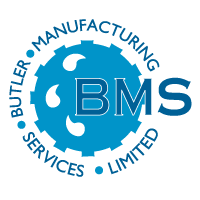What is the difference between ‘Effluent Standard’ & ‘Stream Standard’ in sewage treatment?
Customer Question:
What is the difference between the Effluent Standard and the Stream Standard in sewage treatment?
Explanation of the Two Standards:
Effluent Standard (Final Effluent Standard):
Refers to the quality of effluent that a wastewater treatment plant (WWTP) must produce.
Standards are based on a set maximum inlet load and are measured by parameters such as:
Nitrite (NO2)
Orthophosphate (OP)
Total Phosphate (TP)
For industrial effluent, additional parameters may apply.
Package sewage treatment focuses on normal domestic sewage or equivalent.
Stream Standard:
Refers to the quality of water in the watercourse receiving the treated effluent.
Standards are determined based on the watercourse's use, e.g.:
Drinking water
Bathing
Fishery purposes
If a watercourse serves sensitive purposes, stricter Stream Standards will apply, resulting in higher Effluent Standards for the WWTP.
How the Standards Are Related:
Effluent Standard Derived from Stream Standard:
Effluent standards for a WWTP are set by working backward from the Stream Standard.
Example:
If the receiving water body is a fishery or a drinking water source, the Effluent Standard will include strict limits on BOD, SS, NH4, TN, and TP.
Dilution and Biodegradation:
A watercourse’s assimilative capacity (ability to dilute and biodegrade pollutants) influences its Stream Standard.
If significant dilution or biodegradation can occur, the Stream Standard may be lower, allowing for less stringent Effluent Standards.
Key Concepts:
| Standard | Definition | Application |
|---|---|---|
| Effluent Standard | Quality of effluent a WWTP must produce, based on influent parameters and discharge limits. | Determined by the requirements of the receiving watercourse (Stream Standard). |
| Stream Standard | Quality of water in the receiving watercourse, set based on its intended use and assimilative capacity. | Used to establish Effluent Standards for discharges into the watercourse. |
By understanding these standards, sewage treatment plants can ensure compliance with environmental regulations and protect watercourse ecosystems.
About BMS
BMS is a quality manufacturer of package products for wastewater and stormwater treatment:
Established: 1986
Global Reach: Exported to over 50 countries.
Family Business: A third-generation company with deep expertise.
BMS Product Range
BMS provides a wide array of surface water and wastewater treatment products, including:
View the full product catalogue here
Additional Services by BMS
Free Design Service: For sewage treatment, pump stations, and surface water management.
Operation and Maintenance: Full services for existing installations, including repair, advice, and testing.
Free CPD Presentations: Available for sewage treatment and surface water management, delivered at your location.
We would be delighted to discuss any requirements you might have, and we are available to meet you at your convenience. Contact us today.
© Butler Manufacturing Services 2024.
